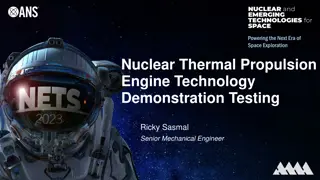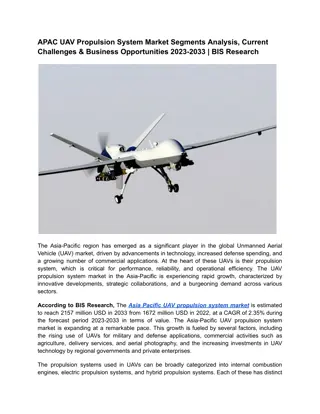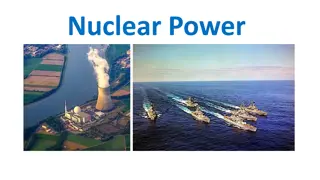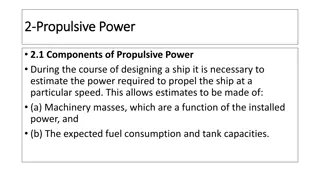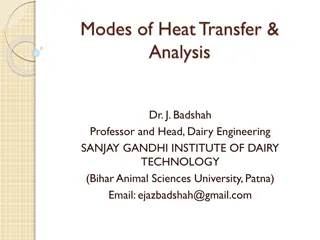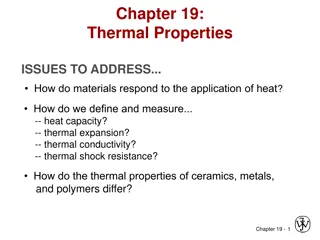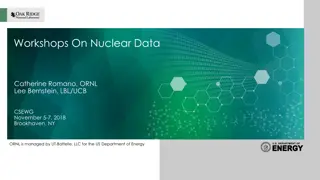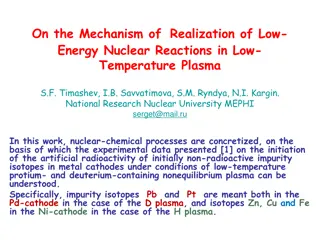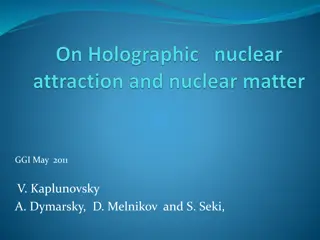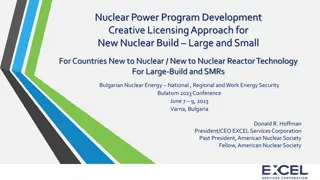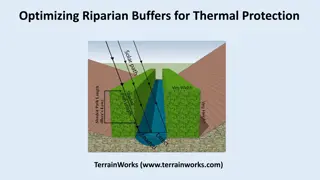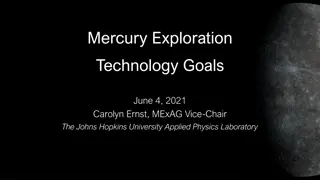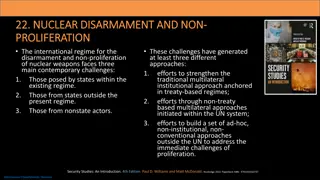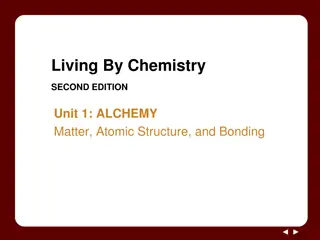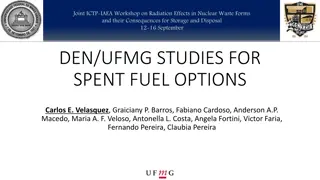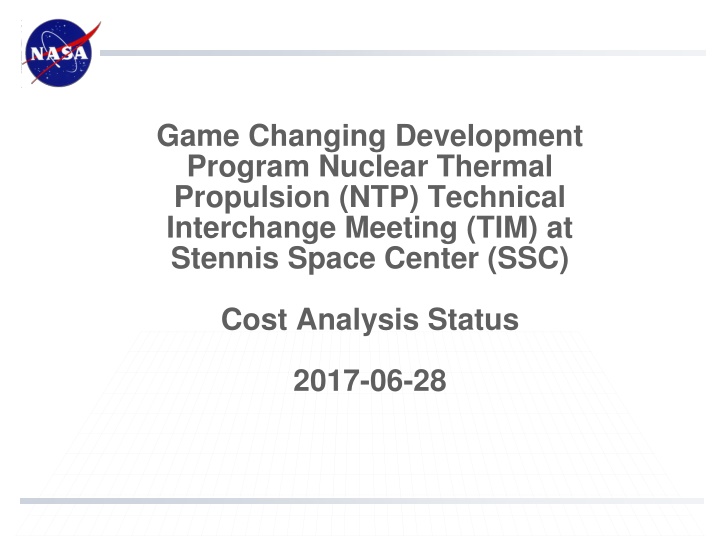
Nuclear Thermal Propulsion Cost Analysis Status
In a technical interchange meeting at Stennis Space Center, a cost analysis for the Nuclear Thermal Propulsion program was discussed. The analysis focused on estimating costs, setting ground rules, assumptions, and requirements, and implementing a cost risk process. A detailed schedule outlined the steps for cost review, integration, feasibility assessments, and risk analysis. The goal was to establish a baseline cost estimate with at least 70% confidence level. This comprehensive approach aimed to address uncertainties and refine cost estimates for the development program.
Download Presentation

Please find below an Image/Link to download the presentation.
The content on the website is provided AS IS for your information and personal use only. It may not be sold, licensed, or shared on other websites without obtaining consent from the author. If you encounter any issues during the download, it is possible that the publisher has removed the file from their server.
You are allowed to download the files provided on this website for personal or commercial use, subject to the condition that they are used lawfully. All files are the property of their respective owners.
The content on the website is provided AS IS for your information and personal use only. It may not be sold, licensed, or shared on other websites without obtaining consent from the author.
E N D
Presentation Transcript
Game Changing Development Program Nuclear Thermal Propulsion (NTP) Technical Interchange Meeting (TIM) at Stennis Space Center (SSC) Cost Analysis Status 2017-06-28
Cost and Schedule Analysis Objects and Approach Analysis Objectives for FY17 - Provide a preliminary, yet holistic cost estimate of NTP stage Cost through first set of flight units Mission Ops, Ground Systems and LV costs are not included - Identify gaps to be refined and trade studies to be performed throughout FY18 Approach - Collect information into single set or program documents to set a baseline Mitigate unfair comparisons through high-level of centralized documentation - Use a risk-based approach to help identify uncertainties and gaps Cost and schedule baselines are intended to be sufficiently conservative to account for the majority of uncertainty ~ Estimate to at least 70% confidence 2
A Consistent Set of Ground Rules, Assumptions, and Requirements Represents the Scope of the Program Ground Rules - E.g., NTP will use LEU - E.g., Tungsten Cermet is the Baseline Fuel - E.g., Design Reference Architecture (DRA) 5 represents the baseline stage design Assumptions - E.g., Licensing Authority: NRC is licensing authority for the ground and transportation; DOE is licensing authority for space - E.g., Number of Licenses: One license covers construction and operations - Post Irradiation Evaluation (PIE): No PIE will be performed within a hot cell at SSC, yet will be shipped to an appropriate external facility as necessary Requirements - E.g., Each engine shall have a minimum of 25k lbf thrust - E.g., Engine shall have a minimum Isp of 900s - E.g., Engine shall have the capability to restart TBD times 3
Cost Risk Process is Iterative WBS, Organization, Objectives, Assumptions Schedules / IMS Results Design and Requirements Bottoms-Up Estimates Integrated Cost Model Cost Models BOE Risk Assessment 4
Six Month Schedule April May June July August September Draft BOEs Cost Review - Baseline Cost Cost Integration and Review Engine feasibility brief. Fuels brief. Risk Assessment and Analysis Collect program data Independent Cost Review Iteration of all Cost/Schedule/Program Definition Data Develop Report and Presentation Presentation to GCD 5
Information Collection Challenge Parallel Analyses Program Cost and Schedule Program Scope WBS, Organization, Objectives, Assumptions Schedules / IMS Design and Requirements Cost Need to Align Many Parallel Efforts into a Single Program Baseline 6
Cost Risk Analysis Provides Relief to Pressure for Cost Fidelity Capturing a range of potential costs - What keeps you up at night? - What would make for a really good day? Best Case Cost: e.g., leverage xyz program for greater commonality and cost savings Point Cost Estimate Basis of Estimate: e.g., X people x Y $rate = $Z, Materials = $X based on xyz program Worst Case Cost: e.g., assumption xyz proves invalid and the heritage hardware needs significant redesign 7
Potential Cost Risks from this TIM 1. 2. Scale of core development for fuel qualification Engine control qualification issues due to unknown transients and interaction of nuclear and hydrogen flow control Additional safety systems for maximum hypothetical events Systems and operations needs for decay heat removal Requirements associated with core relocation Shielding requirements drive A3 structural redesign and reconstruction Altitude testing or plume interaction requirements increase ground test requirements 3. 4. 5. 6. 7. 8
Requests over Next Two Months Data to Support Schedule Development - Tasks - Durations - Interrelationship logic between tasks Data to Support Basis of Estimate - Labor (time, rates) - Materials / Bill of Materials - Analogous Program Data Information to Support Cost Uncertainty - Risks that lead to cost growth - Opportunities that lead to cost savings - Justification for ground testing mitigation approaches to risk 9

